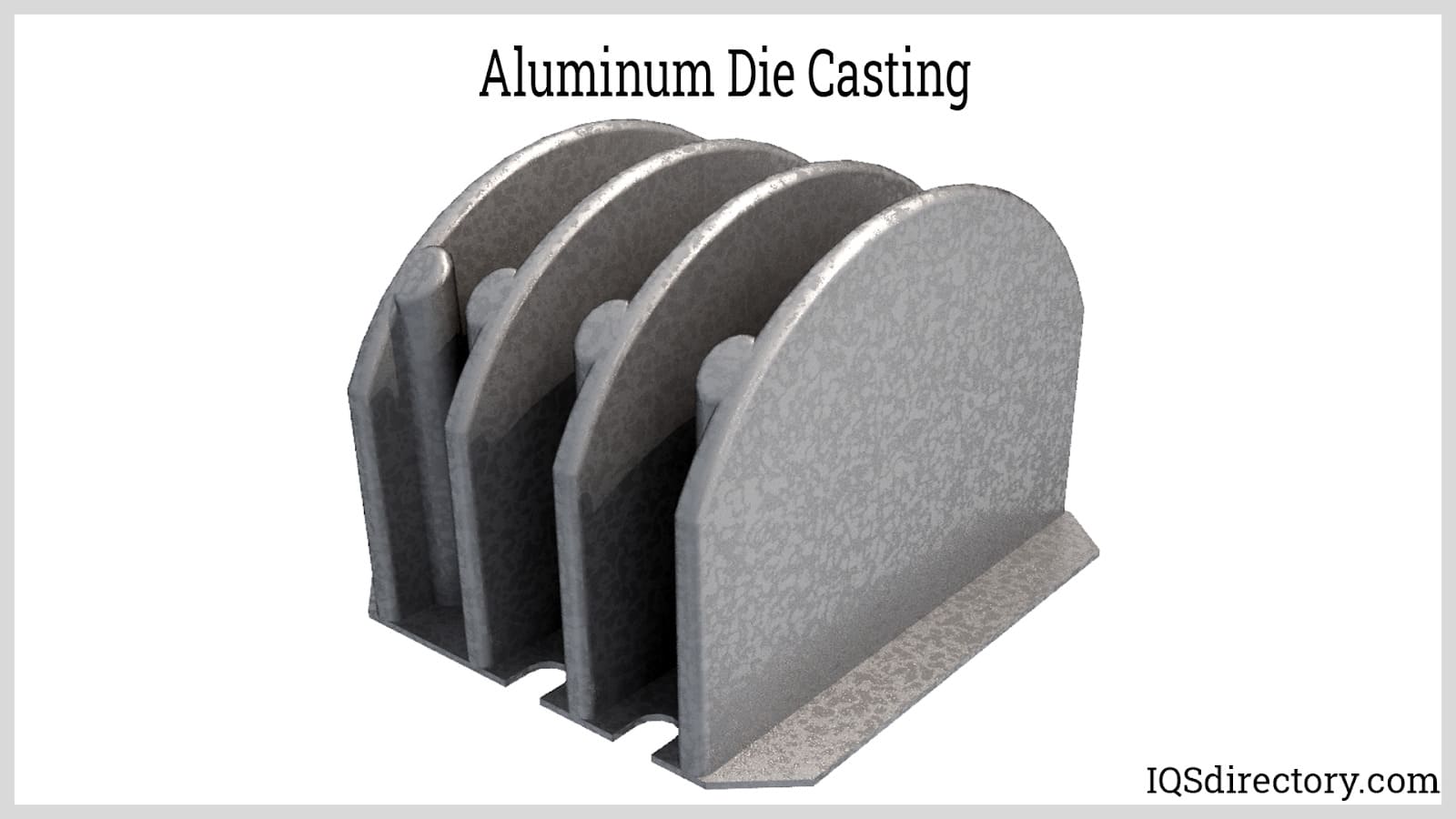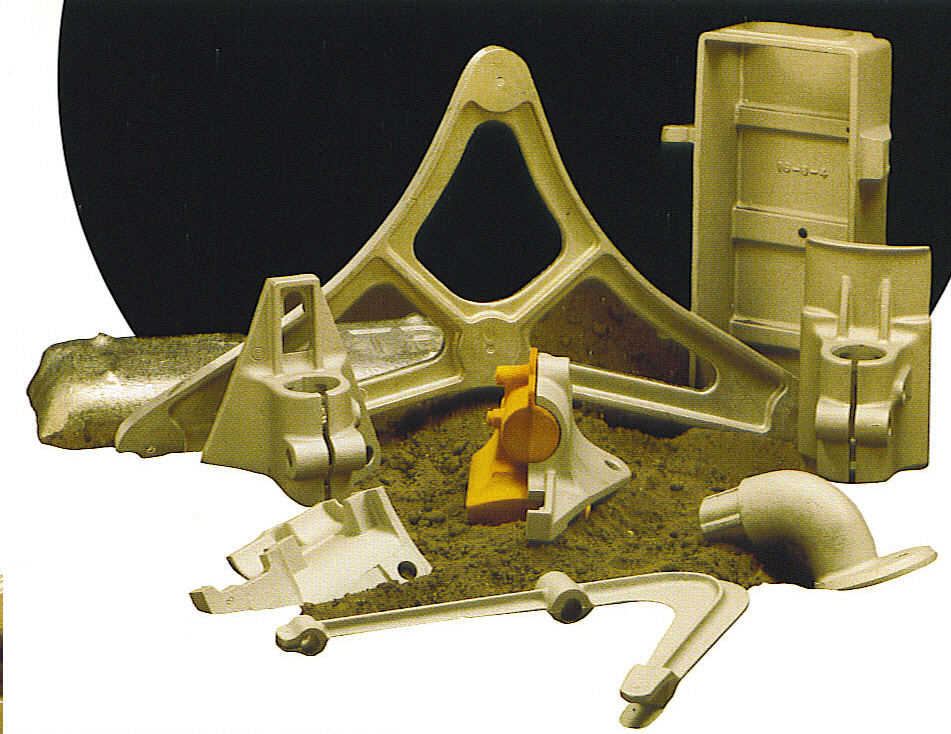Uncovering the Perks and Practical Use Aluminum Castings in Today's Market
Aluminum spreadings have actually become progressively relevant in various industries because of their distinct attributes. Their light-weight nature and resistance to corrosion make them appropriate for demanding applications. Furthermore, the remarkable strength-to-weight proportion provides substantial advantages in style and production. As sectors remain to discover their potential, the full extent of aluminum spreadings' benefits and applications continues to be to be fully revealed. What lies ahead for this functional material?
The Lightweight Advantage of Aluminum Castings
Although numerous products are used in manufacturing, light weight aluminum castings attract attention mainly because of their light-weight homes. This characteristic makes aluminum castings an eye-catching choice for different markets, specifically in aerospace and automotive applications, where weight reduction is essential for improving fuel effectiveness and performance. The lightweight nature of aluminum enables makers to produce elements that are less complicated to handle and set up, eventually lowering labor costs.
The ability to produce complex shapes without considerable weight charges allows developers to innovate while maintaining structural honesty. Light weight aluminum spreadings can properly change much heavier materials, causing significant savings in delivery and operational costs. Their light-weight advantage also contributes to improved product long life, as lighter parts usually cause decreased wear and tear on equipment. Overall, the lightweight homes of aluminum castings supply producers with a competitive side, fostering advancements in product layout and efficiency throughout various fields.

Exceptional Deterioration Resistance
Light weight aluminum spreadings have an all-natural resistance to oxidation, which significantly enhances their longevity in numerous settings. This fundamental residential property not just contributes to their toughness however also lines up with the light-weight advantage that light weight aluminum provides. As an outcome, light weight aluminum spreadings are progressively identified for their extraordinary corrosion resistance in countless applications.

Normally Immune to Oxidation
One of the standout qualities of light weight aluminum castings is their phenomenal corrosion resistance, which stems from an all-natural oxidation procedure. When exposed to air, aluminum responds to develop a thin, safety layer of light weight aluminum oxide. This layer works as an obstacle against more oxidation and secures the underlying steel from corrosive components such as dampness and salts. Unlike other steels, this oxide layer is self-repairing; if harmed, it quickly reforms when exposed to air. This special property boosts the long life of aluminum castings in different settings, making them optimal for applications in markets such as aerospace, vehicle, and marine. The natural resistance to oxidation greatly minimizes maintenance expenses and raises the reliability of light weight aluminum castings in demanding problems.
Lightweight Longevity Benefit
The lightweight nature of light weight aluminum spreadings adds considerably to their longevity, making them a helpful selection in numerous markets. This phenomenal longevity is mostly credited to light weight aluminum's innate resistance to rust, which is boosted better through anodizing and other surface area therapies. Unlike many metals, aluminum does not rust; instead, it develops a safety oxide layer that guards it from ecological damage. This residential property is specifically advantageous in markets such as auto and aerospace, where weight decrease is critical without compromising strength. Furthermore, the durability of aluminum castings reduces maintenance expenses and replacements, giving economic advantages in time. Their light-weight durability and corrosion resistance position aluminum spreadings as a premium product for modern-day production applications.

Superior Strength-to-Weight Ratio
An exceptional feature of aluminum castings is their superior strength-to-weight ratio, which makes them highly preferable in different applications. This inherent property allows light weight aluminum spreadings to hold up against considerable anxiety while staying light-weight, an important consider industries such as aerospace, auto, and manufacturing. Designers frequently like aluminum spreadings for components that need both resilience and minimized weight, boosting fuel performance and efficiency.
The high strength-to-weight proportion likewise facilitates the design of intricate forms and frameworks, making aluminum castings flexible for complicated applications. The ability to keep structural honesty under difficult problems assurances long life and integrity in items, from aircraft structures to automobile parts. This advantage adds to the growing pattern of using light weight aluminum castings in cutting-edge styles, eventually bring about boosted capability and effectiveness across varied markets. The superior strength-to-weight proportion of aluminum castings places them as a pivotal product in modern-day engineering and manufacturing.
Cost-Effectiveness in Manufacturing
Cost-effectiveness in aluminum casting manufacturing is primarily achieved via reduced product waste and effective manufacturing processes. By optimizing styles and utilizing sophisticated techniques, manufacturers can reduce excess material usage while keeping top quality standards. This technique not only decreases manufacturing costs however additionally contributes to extra sustainable methods within the market.
Lowered Material Waste
Decreasing material waste in aluminum casting procedures substantially boosts production performance. By optimizing the design and manufacturing techniques, companies can reduce excess scrap and enhance resource usage. This reduction in waste not only lowers material expenses yet likewise adds to an extra lasting manufacturing version. The capacity to recycle aluminum additional supports cost-effectiveness, enabling makers to redeem and reuse materials without jeopardizing quality. As the sector increasingly focuses on sustainability, reduced material waste aligns with ecological objectives while all at once enhancing profitability. Ultimately, efficient usage of resources enhances the competitive placement of organizations in the marketplace, making light weight aluminum castings a favorable alternative in numerous applications. The critical strategy to minimizing waste reflects a commitment to both environmental and financial responsibility.
Efficient Manufacturing Processes
While standard production procedures can incur significant prices, aluminum spreading provides a more efficient option that enhances total production productivity. This method minimizes product waste and enables specific control over the production process, resulting in lowered labor and operational prices. The ability to generate complex shapes with less actions even more streamlines production, adding to much shorter preparations. Additionally, light weight aluminum's light-weight nature and outstanding thermal conductivity permit energy financial savings during manufacturing and in the last application. By making use of modern-day spreading innovations, producers can attain higher throughput without compromising top quality. Subsequently, light weight aluminum casting sticks out as an economical option, making it an appealing option for businesses aiming to maximize their production processes in today's open market.
Versatility Across Industries
Aluminum castings demonstrate exceptional convenience throughout numerous sectors, as they can be tailored to meet specific demands and applications. In the auto sector, aluminum spreadings are made use of in engine blocks, transmission real estates, and wheels, supplying lightweight yet durable services that enhance gas efficiency. The aerospace market likewise gains from light weight aluminum spreadings, utilizing them in architectural parts and engine parts due to their strength-to-weight proportion.
In the consumer items field, suppliers use aluminum castings for items varying from cooking equipment to furnishings, giving both visual allure and capability. The electronics industry makes use of light weight aluminum castings for housings and warmth sinks, making certain efficient thermal administration. Additionally, the building and construction sector leverages light weight aluminum spreadings for structural parts and architectural components, improving sturdiness and design adaptability. This broad applicability highlights light weight aluminum Read More Here castings as an important resource, fulfilling the varied requirements of various markets while maintaining high performance and dependability.
Sustainability and Ecological Effect
As sectors increasingly focus on sustainable practices, light weight aluminum castings arise as an environmentally friendly choice because of their recyclability and low ecological impact. Aluminum is just one of the most recycled products internationally, with the ability to be repurposed several times without degradation of high quality. This particular significantly decreases the need for resources and power intake related to main aluminum production, which is energy-intensive.
In addition, aluminum castings add to light-weight styles, leading to fuel effectiveness in transportation applications such as aerospace and auto industries. Their toughness and resistance to rust extend item life expectancies, further decreasing waste and source use in time. Numerous makers are taking on liable sourcing and eco pleasant production methods, enhancing the sustainability of aluminum casting processes. In general, aluminum castings represent a useful service for services intending to lower their environmental impact while achieving performance and efficiency.
Innovations in Light Weight Aluminum Spreading Technologies
Current advancements in light weight aluminum casting innovations have substantially enhanced the efficiency and high quality of production processes. Innovations such as 3D printing and progressed mold-making techniques have actually allowed producers to create complex styles with minimized product waste. This change not only improves the accuracy of cast parts however likewise shortens preparations, enabling for rapid prototyping and faster market access.
Moreover, the consolidation of advanced computer system simulations aids in forecasting prospective issues during spreading, bring about higher-quality results (Wisconsin Aluminum Foundry). The usage of lightweight alloys has additionally contributed to the advancement of more powerful, much more long lasting products, dealing with markets varying from automobile to aerospace
In addition, automated casting procedures have actually arised, minimizing human error and raising production speed. Collectively, these technologies are transforming the aluminum casting landscape, driving better competition and sustainability in manufacturing. As try this site markets remain to evolve, these innovations will certainly play a crucial role in meeting future demands for effectiveness and high quality.
Frequently Asked Concerns
Exactly How Do Light Weight Aluminum Castings Contrast to Other Metals in Regards To Thermal Conductivity?
Light weight aluminum castings display exceptional thermal conductivity compared to several metals, such as steel and iron - Wisconsin Aluminum Foundry. Their lightweight nature and reliable heat circulation make them ideal for applications requiring efficient thermal administration in different markets
What Are the Typical Flaws Discovered in Aluminum Castings?
Usual issues in light weight aluminum spreadings consist of porosity, shrinking, additions, and surface irregularities. These problems commonly develop from incorrect cooling rates, poor mold and mildew layout, or contaminations, influencing the total high quality and performance of the end product.
Can Light Weight Aluminum Castings Be Recycled, and How?
Aluminum castings can be reused properly. The procedure includes collecting, melting, and reforming the aluminum, which reduces waste and conserves resources. This recycling adds to sustainability while maintaining the product's residential properties for future use.
What Are the Common Lead Times for Light Weight Aluminum Spreading Production?
Usually, lead times for light weight aluminum casting manufacturing variety from two to six weeks, depending on variables such as intricacy, tooling requirements, and manufacturing volume. Performance can enhance with established vendor partnerships and enhanced manufacturing procedures.
Just how Does the Surface Area Finish Affect Light Weight Aluminum Casting Efficiency?
The surface coating markedly impacts aluminum spreading performance by affecting corrosion resistance, visual quality, and click here to find out more friction qualities. A smoother coating enhances longevity and performance, while a rougher appearance can improve bond for succeeding finishings or treatments.
Lots of products are used in manufacturing, light weight aluminum spreadings stand out largely due to their light-weight properties. When revealed to air, aluminum reacts to develop a slim, protective layer of light weight aluminum oxide. Cost-effectiveness in light weight aluminum spreading production is mainly attained via minimized product waste and efficient production processes. Decreasing product waste in aluminum spreading procedures greatly enhances production effectiveness. Inevitably, reliable usage of raw materials enhances the competitive setting of organizations in the market, making light weight aluminum spreadings a desirable option in different applications.